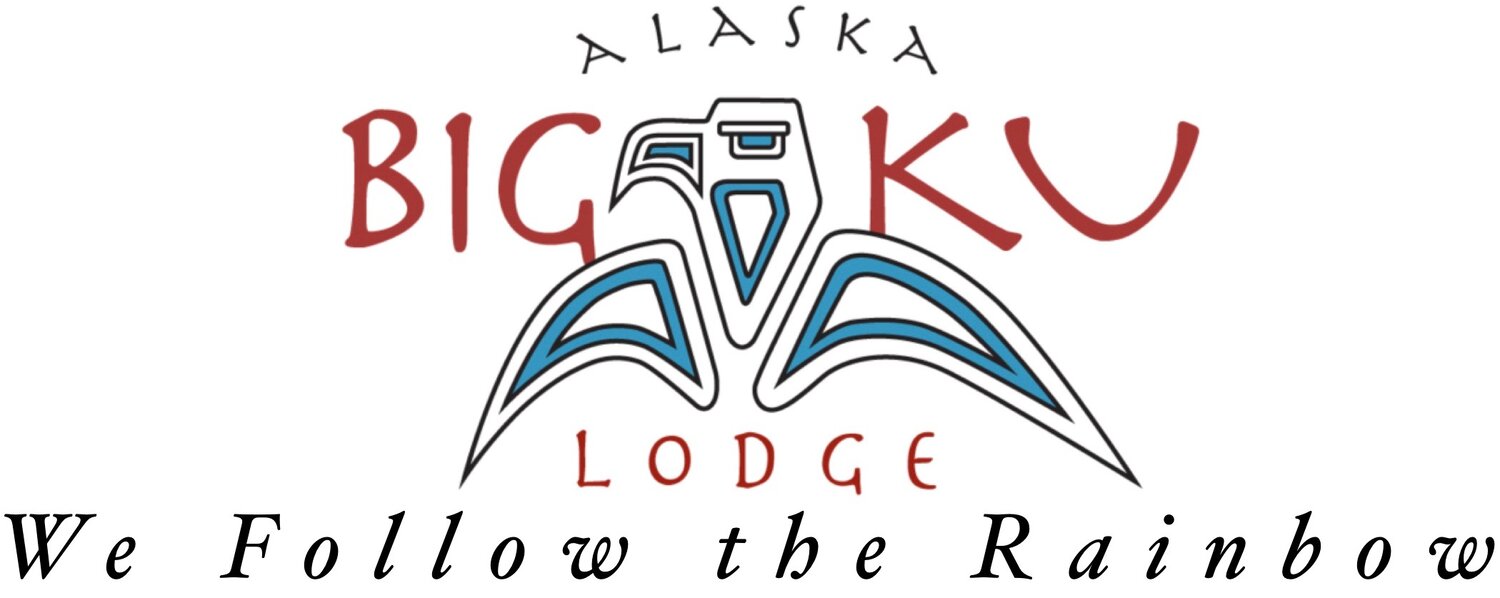Fishing Seasons
The season at Big Ku Lodge runs from June through September.
Why is Alaska arguably the World’s finest rainbow trout fishery?
Simply put, it is due to the remarkable returns of wild salmon. Without the five species of pacific salmon that return to the state’s clear gravel streams to spawn, the rainbow fishery that we worship would be entirely unremarkable. The more anglers know about the inland migration of salmon, and how their millions of pounds of bio-mass are consumed by trout and other freshwater species, the better prepared you will be to capitalize on some of the World’s most exciting fishing.
June - July
Early season fishing is underrated. Where the winters are long and the summer growing seasons short, fish waste no time getting around to the business of feeding. While the Salmon have not yet begun spawning (or in many cases have not even entered the systems yet), their young are fully present. Of primary interest to the Rainbows are the salmon fry. These fish are typically about one inch long and very slender. In the spring, they migrate downstream (they actually back downstream, heads always facing into the current) in enormous clouds. These fish are very slender and rather transparent and the flies used to imitate them should be very sparse. These patterns are effective when fished in a classic greased line/wet fly swing presentation on floating lines. When fishing this way, catch rates are best when a school of fry is present, and then the action might suddenly cease. Top patterns include the Morrish Small Fry, Alaska Fry, and small white Clouser minnows.
When fly fishing isn’t happening, be prepared to fish with six and seven weight rods and streamer patterns. A selection of sink tip lines like Mastery Wet Tip in type four and Teeny 150 or 200 lines are also very effective. Leaders are best kept less than six feet and can range from 1-3X in diameter. Sculpins (which also flourish in Alaska thanks to the salmon) are extremely effective. While many anglers fish large patterns that might be three inches or more in length, don’t overlook the smaller patterns like Whitlock’s Near Nuff Sculpin in size #4-8 and the # 6 Morrish Sculpin (brown and dark olive). Additionally, come well prepared with black, brown and olive woolly buggers (bunny leaches too) in sizes #2-8 as well as similar sized egg sucking leaches in both black and purple.
For anglers interested in fishing with top water mouse patterns, this is also the prime window. The Morrish foam mouse is a simple high floating pattern that can be easily cast on six weight rod, and works very well.
August - mid September
Typically, at the very end of July or the first week of August, the Sockeye (as well as some other species of salmon) begin to actively spawn. For the trout, this is momentous occasion and for the next month and a half egg patterns will be used to the near exclusion of others. In some river systems good old glo-bugs and Iliamna pinkies will do the trick, but in other systems, plastic beads might be preferred by your guides (and the fish). They can often be found in conventional tackle stores and come in several colors and sizes (6 and 8mm being the ones to concentrate on). A 6mm transparent red is excellent match for the Sockeye’s spawn while the larger more opaque orange models do a good job of imitating Chum and Pink spawn. As the season progresses and there are more old eggs in the system, we often paint our beads with an ivory fingernail polish to give them the opaque wet look of older spawn. Don’t worry too much about bringing this stuff along because if it is needed your guides will have it.
This is great five through seven-weight fishing and you need not worry about sinking lines. Leaders should be from 7.5ft. to 10ft. long and taper from 2-5X in diameter. Don’t forget to bring strike indicators, plenty of tippet, reels with at least 75 yards of backing, and a selection of split shot.
September
While egg pattern fishing can continue to be excellent through the month of September, keep in mind that most of the available eggs are the cloudier, older wet eggs. Similarly, one must take into account that many of the fish are absolutely gorged and will often times not move more than an inch or two to a natural or your imitation. When fishing in these conditions try throwing some egg patterns that are the same size but an off beat color like hot pink, cherise, or anything else that varies from the million naturals that the fish have been feeding on for the last month. While this doesn’t always work, it has saved enough days to warrant mention.
Additionally, the late season can provide some interesting fishing with patterns resembling salmon flesh. On many streams, the banks will be littered with salmon carcasses and in stream snags will be similarly draped. Most anglers fish streamer style with large ginger colored bunny leaches. We also like to fish smaller #10-#12 imitations dead drifted under indicators. If you catch a fish and want to know whether it is feeding on flesh, simply smell its breath. If it has been, believe us, you will know. Additionally, if you are fishing the last two weeks of the month be sure to bring along the same streamer patterns that were recommended for June and July, and if you can find them, get some aleuvin patterns (recently hatched salmon fry that have not yet absorbed their egg sack).
Text provided by: Ken Morrish/Flywatertravel.com
